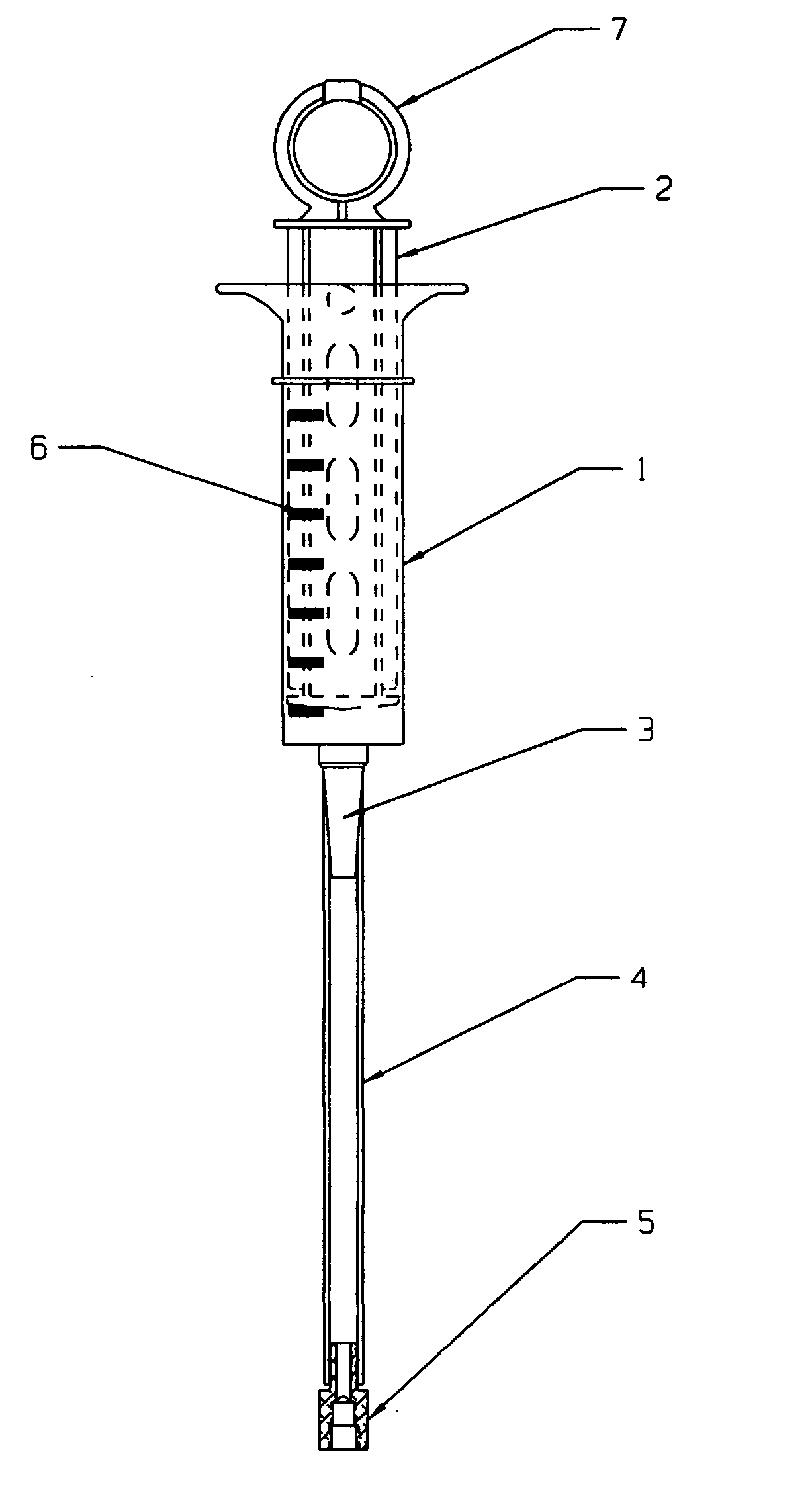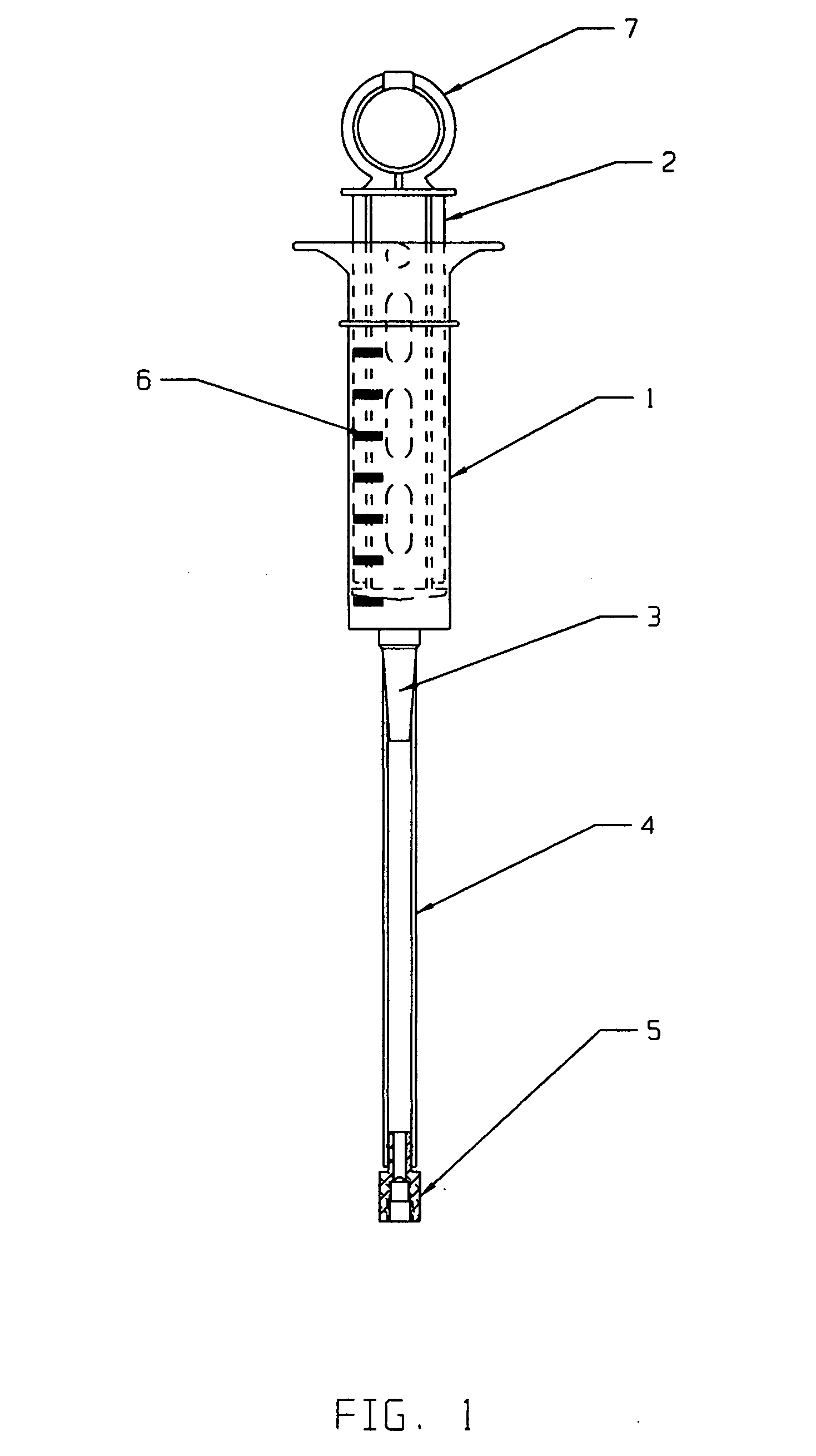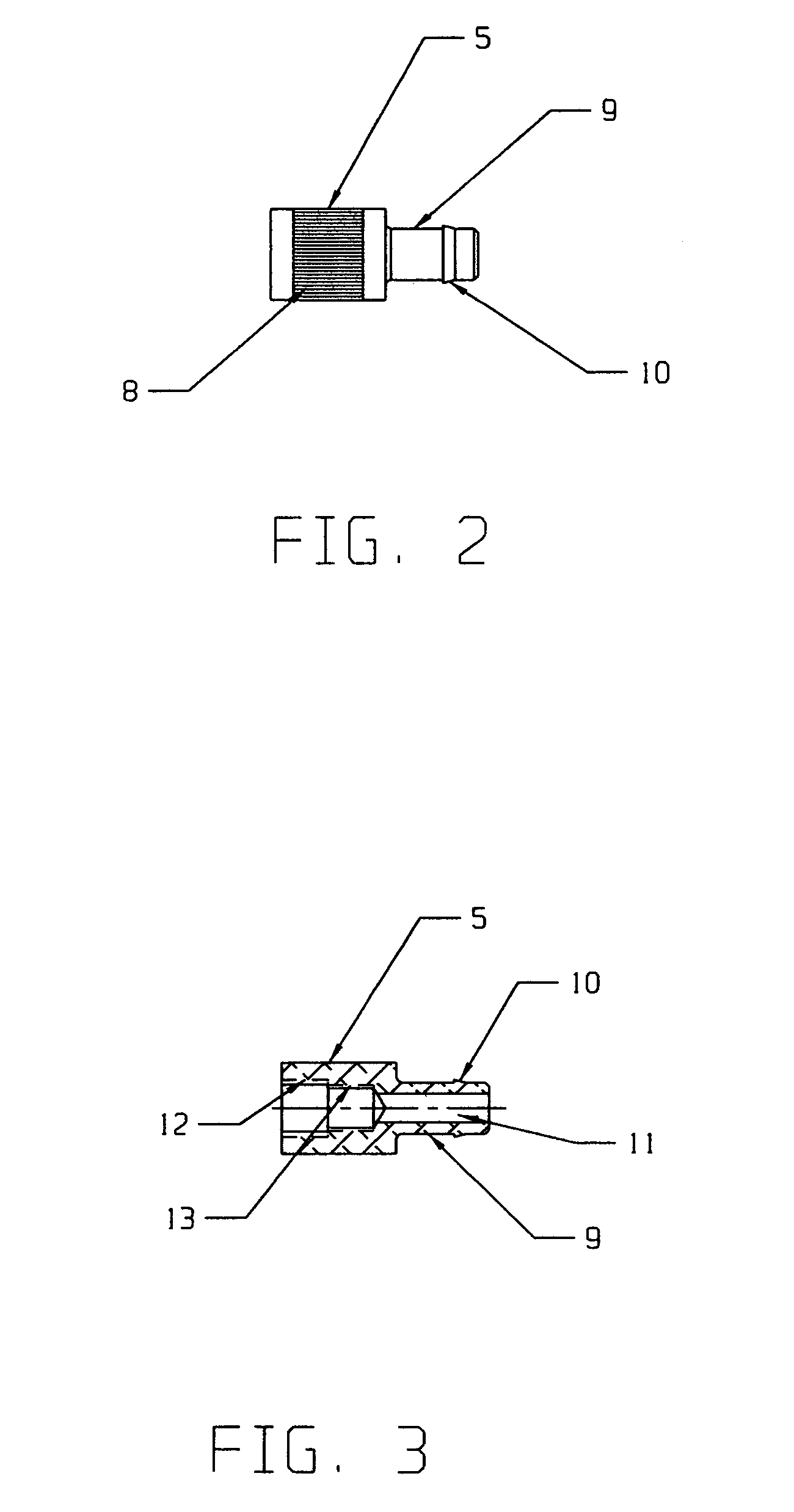Tire sealant injector
- Summary
- Abstract
- Description
- Claims
- Application Information
AI Technical Summary
Benefits of technology
Problems solved by technology
Method used
Image
Examples
Embodiment Construction
[0014] In FIG. 1, the elements shown are arranged in a preferred form. Sealant reservoir 1 has a plunger mechanism 2 positioned within its chamber. The plunger mechanism is shown to have a ring type end 7 but it should be stated that any type of end can be used. The outer walls of the sealant reservoir 1 have level indicator markings 6 so as to aid in achieving the proper filling level depending upon the size and style of the tire to be filled. The sealant reservoir 1 is that of a syringe type whereas the outer syringe forms the reservoir and the plunger mechanism 2 acts to both draw the sealant from its container and to expel the sealant through the hose connector 3 positioned at the sealant reservoir end. Connected to the hose connector 3 is a flexible hose or tubing 4. It is preferable that the tubing 4 is clear so as to make sure all the sealant has been dispensed but the tubing 4 can be opaque. While size, shape and color are not critical to the functioning of the sealant injec...
PUM
| Property | Measurement | Unit |
|---|---|---|
| Flexibility | aaaaa | aaaaa |
| Area | aaaaa | aaaaa |
Abstract
Description
Claims
Application Information
 Login to View More
Login to View More - R&D
- Intellectual Property
- Life Sciences
- Materials
- Tech Scout
- Unparalleled Data Quality
- Higher Quality Content
- 60% Fewer Hallucinations
Browse by: Latest US Patents, China's latest patents, Technical Efficacy Thesaurus, Application Domain, Technology Topic, Popular Technical Reports.
© 2025 PatSnap. All rights reserved.Legal|Privacy policy|Modern Slavery Act Transparency Statement|Sitemap|About US| Contact US: help@patsnap.com



